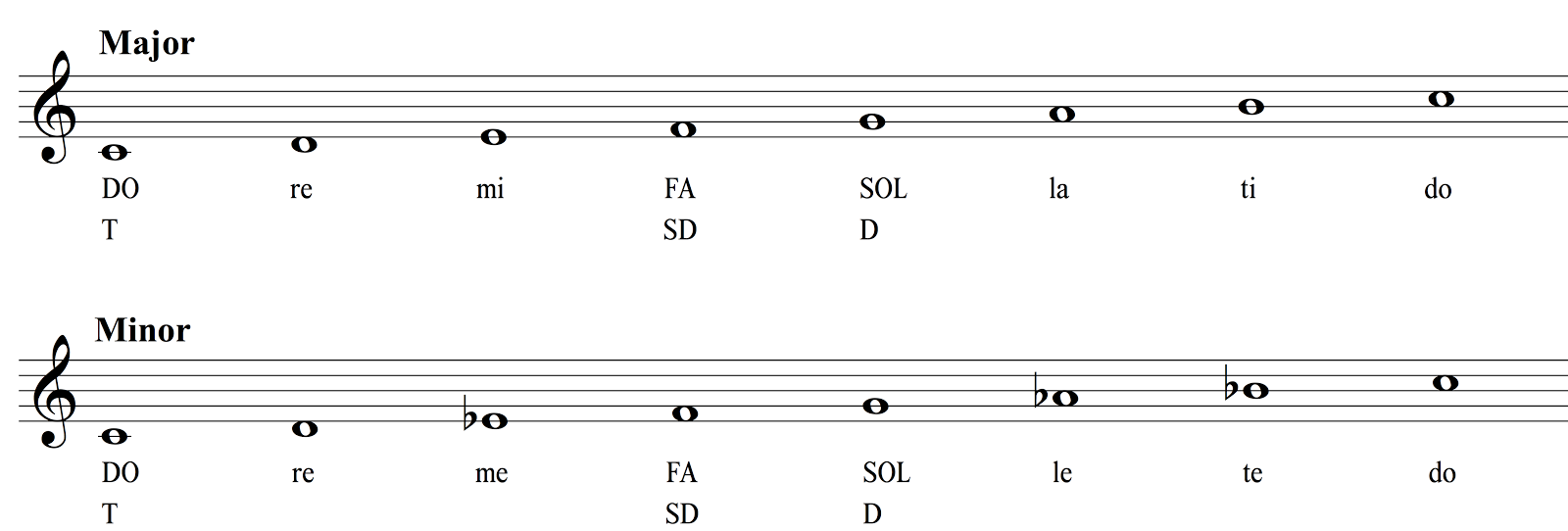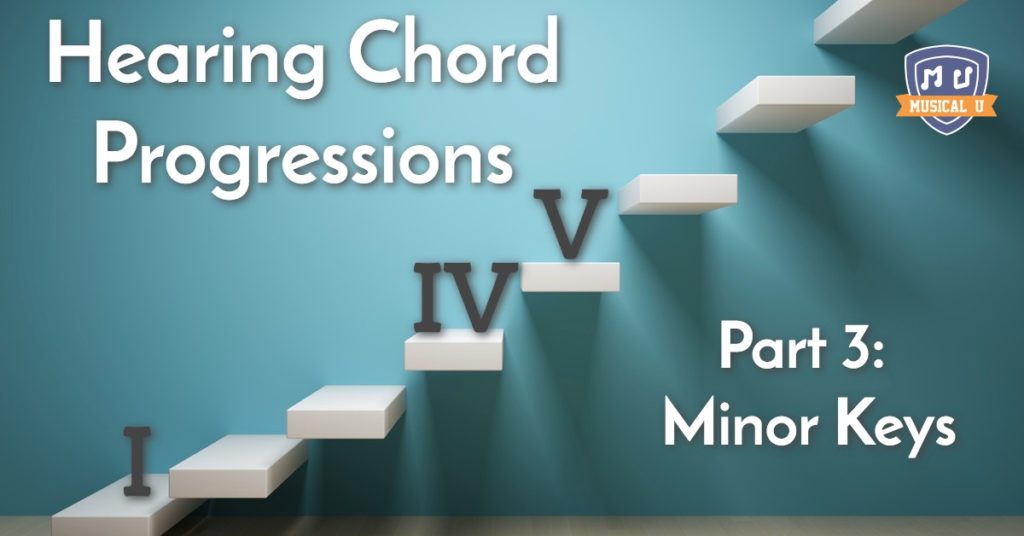Minor keys tend to have rich harmonic possibilities. Sometimes the the chord qualities throw off our ear. But if we remember to listen for the bass – as we learned in Hearing Chord Progressions, Part 1: the Dominant and the Subdominant – we’ll soon find that what we can use what we learned in Part 2 about major chord progressions easily applies to minor progressions as well.
Want to brush up on your tonic recognition before we start? Try
- Finding the Tonic in Major Keys, Part 1 and Part 2
- Finding the Tonic in Minor Keys, Part 1 and Part 2
The Big Three
In both major and minor scales, there are three main notes, with three different ways to name them:

It’s good to familiarize yourself with all three ways of thinking about them, because each name carries slightly different information. Feel free to go back to Parts 1 and 2 if you want some review on this.
These notes, in turn, become the roots of the main chords in both major and minor keys. When you hear one of these notes in the bass, it’s likely that you will then be able to use it to identify the chord.
The quality of a key – either major or minor, doesn’t influence the tonic (T or do), the subdominant (SD or fa) or the dominant (D or sol). Look at the differences between C major and C minor key. Because of the small differences between them, sometimes composers play with and mix their elements.

The scale degrees in minor keys are similar to those from the major keys. The main steps remain the same. The altered ones are lowered and musicians agreed a long time ago to change the names of the altered notes.
So it is not that important the quality of the key (major or minor) when it comes to hearing the bass notes from the main steps of the key, because they remain the same. What changes is the quality of the chords built on the main steps.

In a major key, all the chords built on the main steps are major, while in a natural minor key all the chords from the main steps will be minor. It’s easy to remember. But that will not alter the roots of these chords, so what you have learned until now regarding hearing the bass notes is still working.
Major Glory
Let’s begin with a short warm-up, to remember what we learned by listening for the Tonic, Subdominant, and Dominant in Major keys.
Sing the bass notes of the next song:
Cue the video up to [0:47]. What did you hear in the bass on the first beats of each bar?
- Do-Sol
- Do-Fa
Show answer
Did you also find your do? If you are smiling and you know it’s
Show answer
that’s great, because that means you’re ready to tackle some minor chord progressions.
Real Music examples
So the skills we built in recognising the tonic, subdominant and dominant progressions in Major keys haven’t changed. That means we can go directly to the real music examples and see what happens there.
Let’s play a little game. Identify the progression by solfa, role, scale degree, and real notes.
Minor Miss (You)
Listen to the verse here:
Show answer
That translates into I – IV. A minor to D minor in real notes.
Minor Madness
Just focus on the beginning of the verse here (the chorus modulates to major):
Show answer
IV – I, A minor to E minor in real notes
Ain’t No Sunshine When She’s Minor
Listen carefully from the [0:18}:
Show answer
V – IV – I; E minor, D minor, A minor
Back to Minor
This Amy Winehouse masterpiece is all about the dark minor mood:
Show answer
I – IV; D minor, G minor
A Minor Like This
Caro Emerald swings the lighter Latin side of minor:
Show answer
I – V; C# minor, G# minor
Notice how the chorus brightens into major and cadences into minor. When you start playing with them, you’ll find that minor chord progressions offer many delicious surprises.
→Learn more about minor chord progressions
Minor Variations
While all our examples focused on the natural minor scale, other permutations include the harmonic minor and the melodic minor. In those scales, the natural tones are altered so that the V and sometimes the IV chord are major.
These altered minors are especially popular in classical music.
One of the most useful minor scales in popular, jazz, and traditional music is the intense and driving Dorian mode.
But don’t let this varied and nuanced minor world throw you! Remember, it’s all about the bass, and the Tonic, Subdominant, and Dominant tones will still be the same. You’ve got this covered!
Have fun identifying the progressions in minor or major melodies! Hearing chord progressions enriches your enjoyment of the music, gives you a glimpse of the composer thoughts, gives you the key to playing by ear songs that you never even practiced, and helps you see how minor progressions add to the message of the music.







